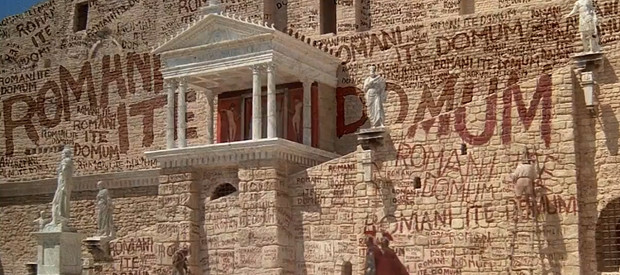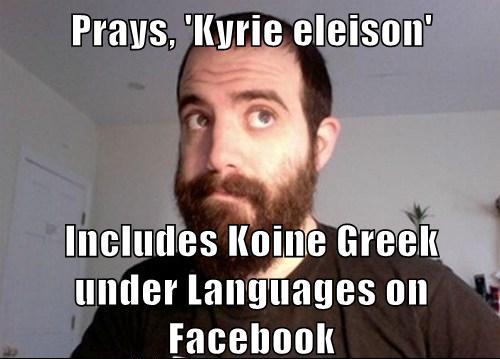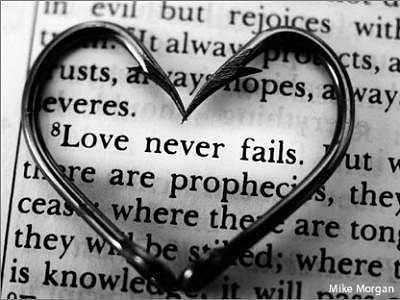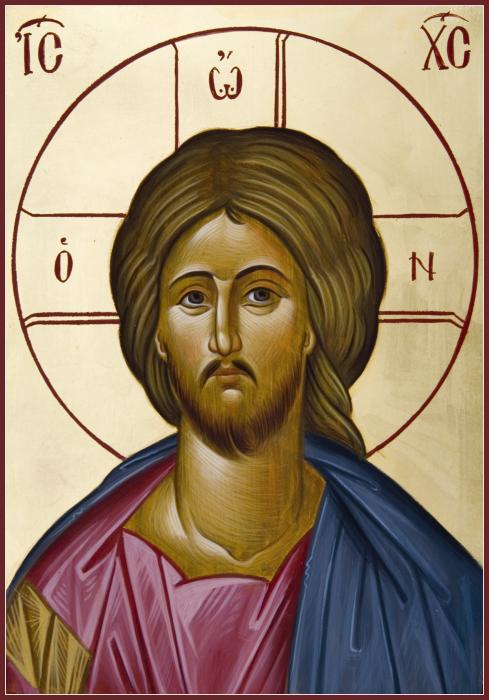Today a question was posted on an article I wrote a couple of years ago. The query was an intriguing one and the investigation to find the answer took some interesting turns, so I thought I’d write about it briefly. Here was the question that was asked:
“My Aunt had an icon of the Theotokos of the Passion…[with] the words, ΕΝ ΕKKΛΕΥΛΟΓΕΙΤΕ ΤΟΝ ΘΕΟΝ. Can you tell me what this means?”
Now, I’m no Greek scholar. Not in the slightest. I’m reasonably familiar with the alphabet and I know how to use a lexicon. Apart from that, I just know a handful of Greek words so as to impress girls at bible studies.
It’s (mostly familiar) Greek to me
Thankfully, three of the four words in the questioner’s text also appear in the the prologue of John’s Gospel, with which I’m familiar. I therefore instantly knew what some of the words meant. The word “ΕΝ” means “in”. “ΤΟΝ” is the article used with an accusative cased noun, in this case, “ΘΕΟΝ“, which means “God”. So, the sentence read to my mind: “In …. the God”.
I didn’t know what the second word, “ΕKKΛΕΥΛΟΓΕΙΤΕ”, meant and I couldn’t find it in a lexicon. I “sounded out” the word and saw that it began with “ecc-lay-….”, which sounded an awful lot like “ekklesia”, which I knew meant “church” or assembly. A little bit of googling later, and found a phrase which looked very similar:
ΕΝ ΕΚΚΛΗΣΙΑΙΣ ΕΥΛΟΓΕΙΤΕ ΤΟΝ ΘΕΟΝ
In the assemblies/churches praise God
I contacted my friend Steve with this suggestion since he’s far more familiar with Greek. He confirmed my suspicion that the text given by the questioner was a corrupted form of this verse. If anyone else knows anything different, please leave a comment below.
Ad Fontes!
As we were online discussing this verse, Steve sent me a link to the Greek text Codex Sinaiticus, the earliest copy we have of the complete New Testament. Specifically, he sent me a link to Psalm 67(68), verse 26:

As you can see, this isn’t the easiest thing in the world to read! Early texts like these are generally written all in capitals, with all the words joined together. IFIDIDITWOULDBERATHERDIFFICULTTOREAD!
Nomina Sacra
In my earlier posts concerning icons of Jesus and Mary I mentioned that textual abbreviations are often used in icons. This is called in the Nomina Sacra (“Sacred Name”) and, if you look carefully at the manuscript from the codex, you can see that its use is present here:

The word circled is ΘΕΟΝ, which means “God”, but you can see that not all the letters are present. Instead, only the first and last letters are used, ΘΝ, with a line drawn over the top.
Am I weird that I find stuff like this interesting?
On second thought, don’t answer that….









